Authentication Integration¶
Introduction¶
The goal of Kubeflow on vSphere’s integration with LDAP Server is that you can login to Kubeflow on vSphere using your LDAP account. As shown in the following screenshots, choose Log in with OpenLDAP, input your account name and password, then you can login to Kubeflow on vSphere successfully. When you login, it will create your own user profile automatically.
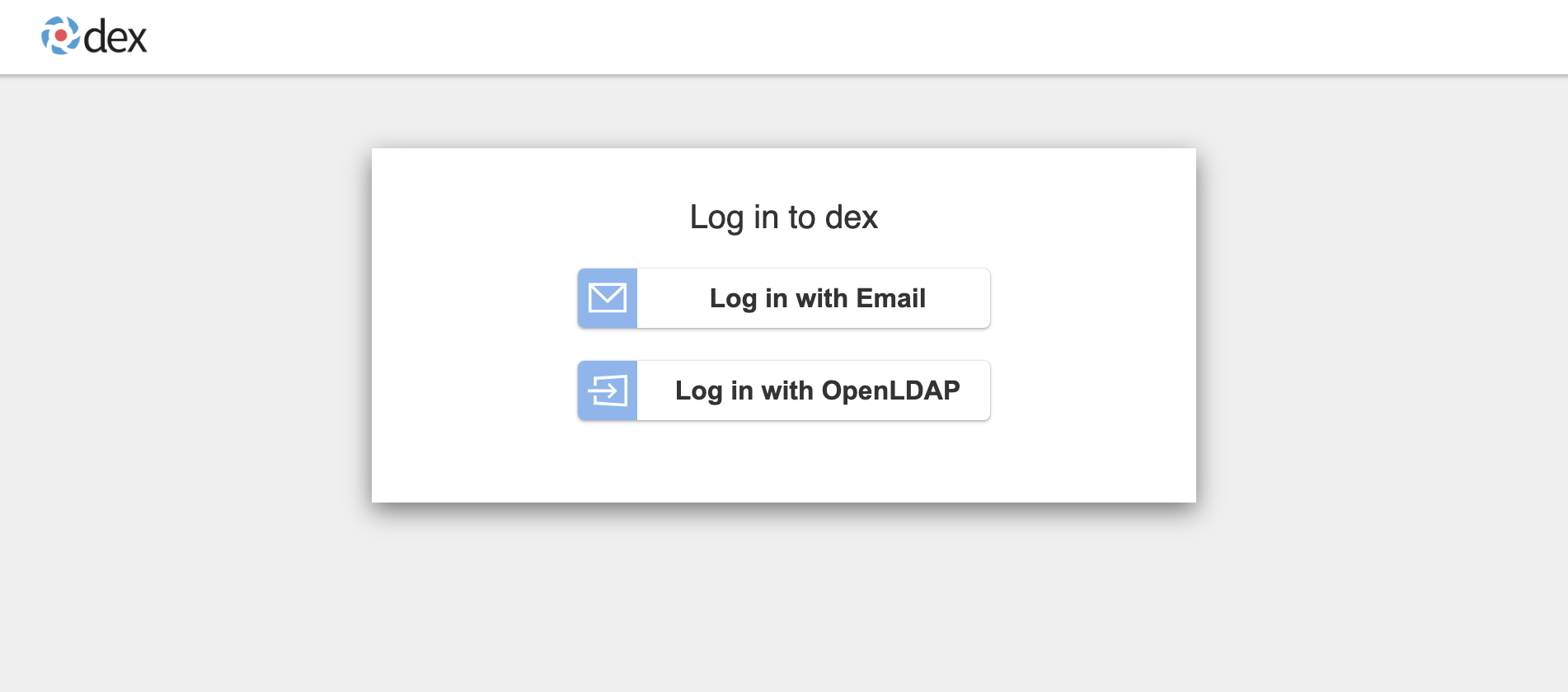
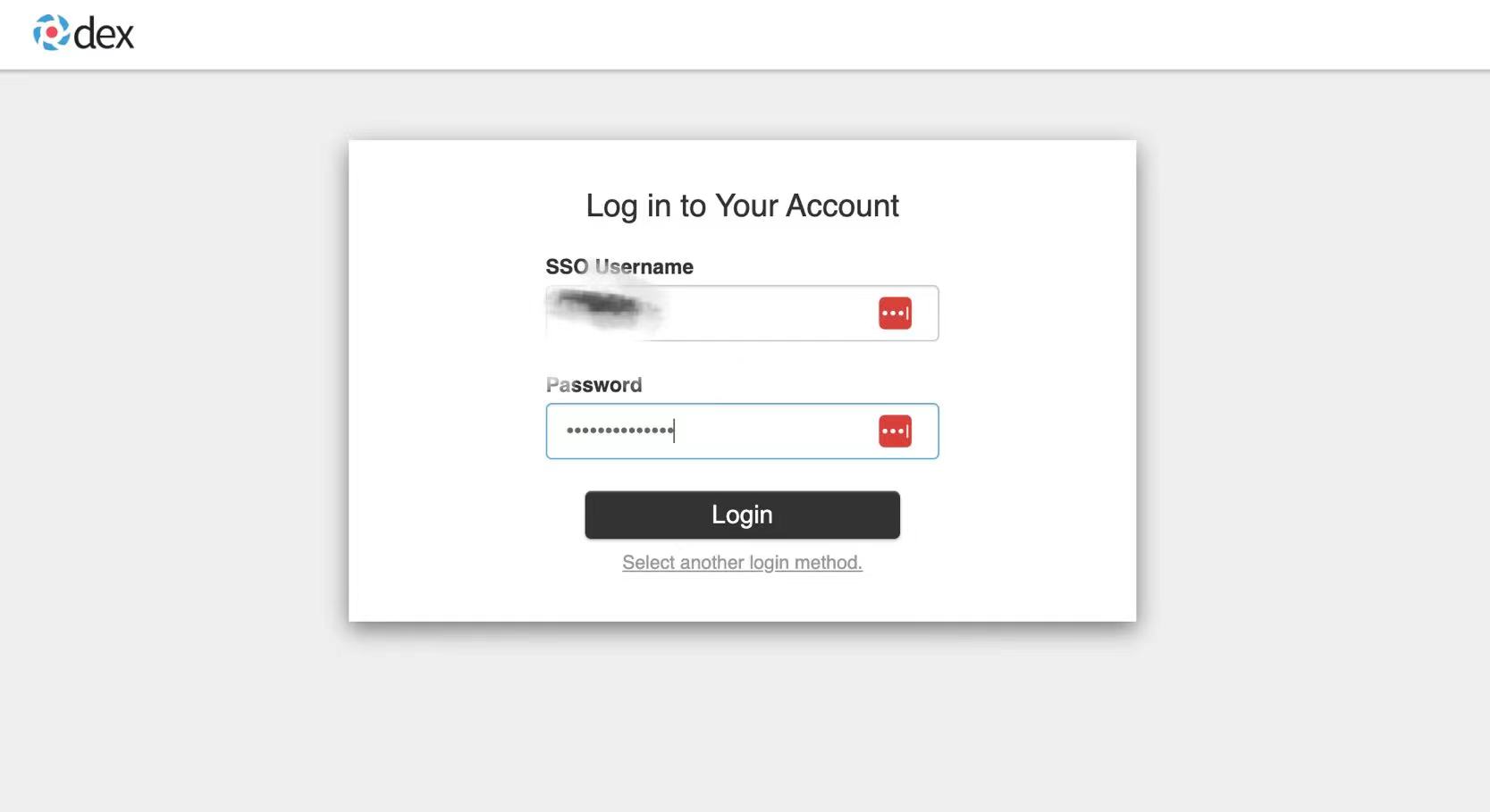
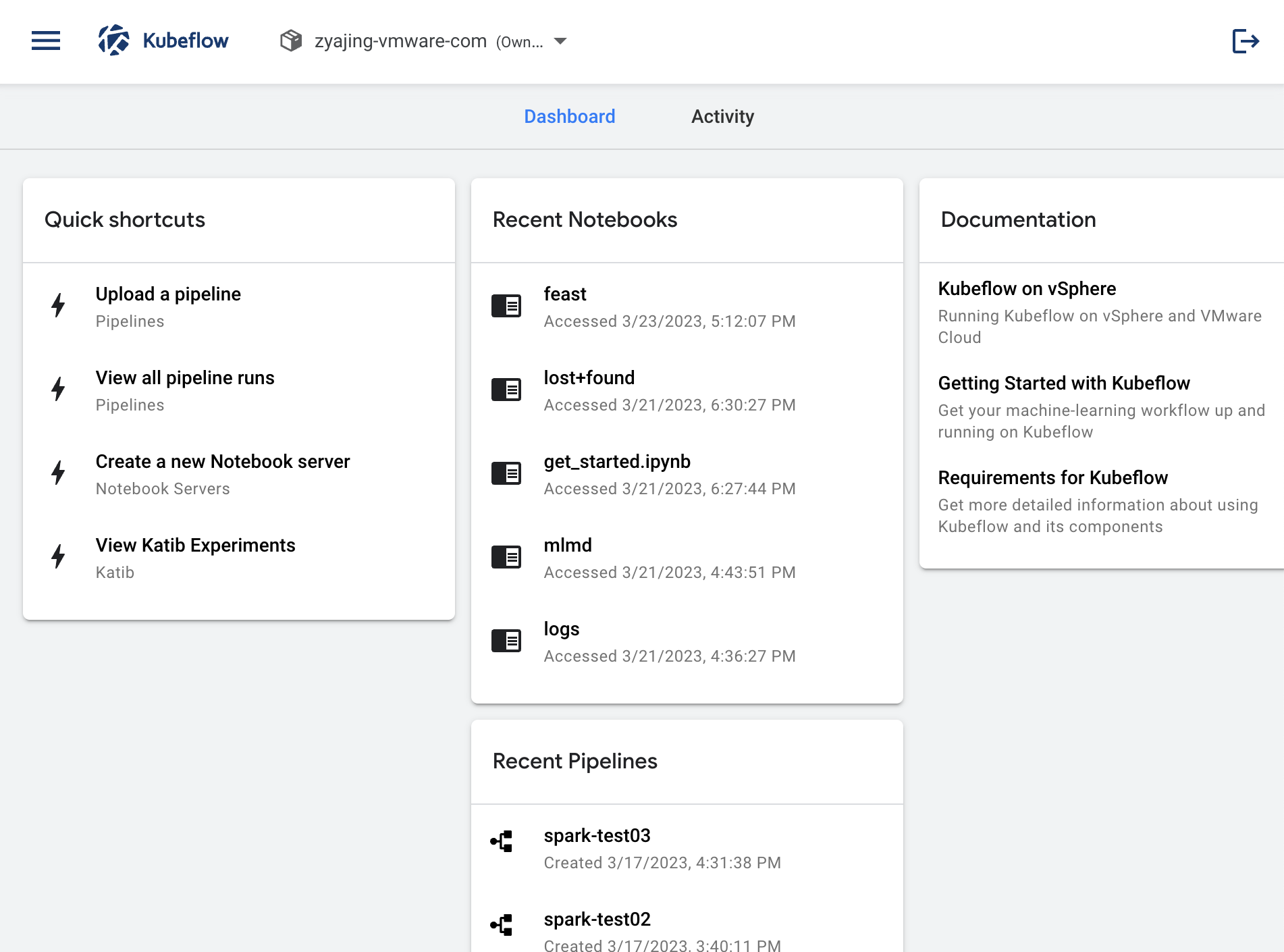
Enable Log in with LDAP¶
Update Dex’s ConfigMap¶
Dex uses a ConfigMap for its configuration.
You need to edit Dex’s ConfigMap to change the issuer to <public_ip>/dex and add LDAP connector.
kubectl edit configmap dex -n auth
issuer: http://dex.auth.svc.cluster.local:5556/dex
# -- some configurations we don't care -- #
# -- some configurations we don't care -- #
staticPasswords:
# -- staticClstaticPasswordsients configuration we don't care -- #
# -- staticClstaticPasswordsients configuration we don't care -- #
staticClients:
# -- staticClients configuration we don't care -- #
# -- staticClients configuration we don't care -- #
connectors:
- type: ldap
name: OpenLDAP
id: ldap
config:
# Host and optional port of the VMware LDAP server in the form "host:port".
# More detailes here: https://dexidp.io/docs/connectors/ldap/
host: ldap.example.com:636
insecureNoSSL: false
insecureSkipVerify: true
bindDN: ""
bindPW: ""
usernamePrompt: SSO Username
userSearch:
baseDN: ou=people,dc=example,dc=com
filter: "(objectclass=inetOrgPerson)"
username: uid
idAttr: DN
emailAttr: mail
nameAttr: cn
For the LDAP connector, you need to finish the LDAP connector configurations.
Update ConfigMap and restart dex deployment¶
# run the following two lines to update dex config with the user you add
kubectl get configmap dex -n auth -o yaml | kubectl replace -f -
# restart dex deployment to make the new configuration work
kubectl rollout restart deployment dex -n auth
Enable automatic profile creation¶
Update Central Dashboard’s ConfigMap¶
The automatic profile creation can be enabled as part of the deployment by setting the CD_REGISTRATION_FLOW environment variable to true. Modify the <manifests-path>/apps/centraldashboard/upstream/base/params.env to set the registration variable to true.
You need to edit Central Dashboard’s ConfigMap changing CD_REGISTRATION_FLOW to true.
kubectl edit configmap centraldashboard-parameters -n kubeflow
# Set CD_REGISTRATION_FLOW to true
# CD_REGISTRATION_FLOW: false
CD_REGISTRATION_FLOW: "true"
Update Central Dashboard deployment and restart it¶
kubectl edit deploy centraldashboard -n kubeflow
# -- some configurations we don't care -- #
spec:
containers:
- env:
...
...
# Change the value of REGISTRATION_FLOW from false to true
- name: REGISTRATION_FLOW
value: "true"
# restart centraldashboard deployment
kubectl get deploy centraldashboard -n kubeflow -o yaml | kubectl replace -f -
When an authenticated user logs into the system and visits the Central Dashboard for the first time, it triggers profile creation automatically. A brief message introduces profiles, and the user can name her profile and click Finish. This redirects the user to the Dashboard where she views and selects her profile in the drop down list.
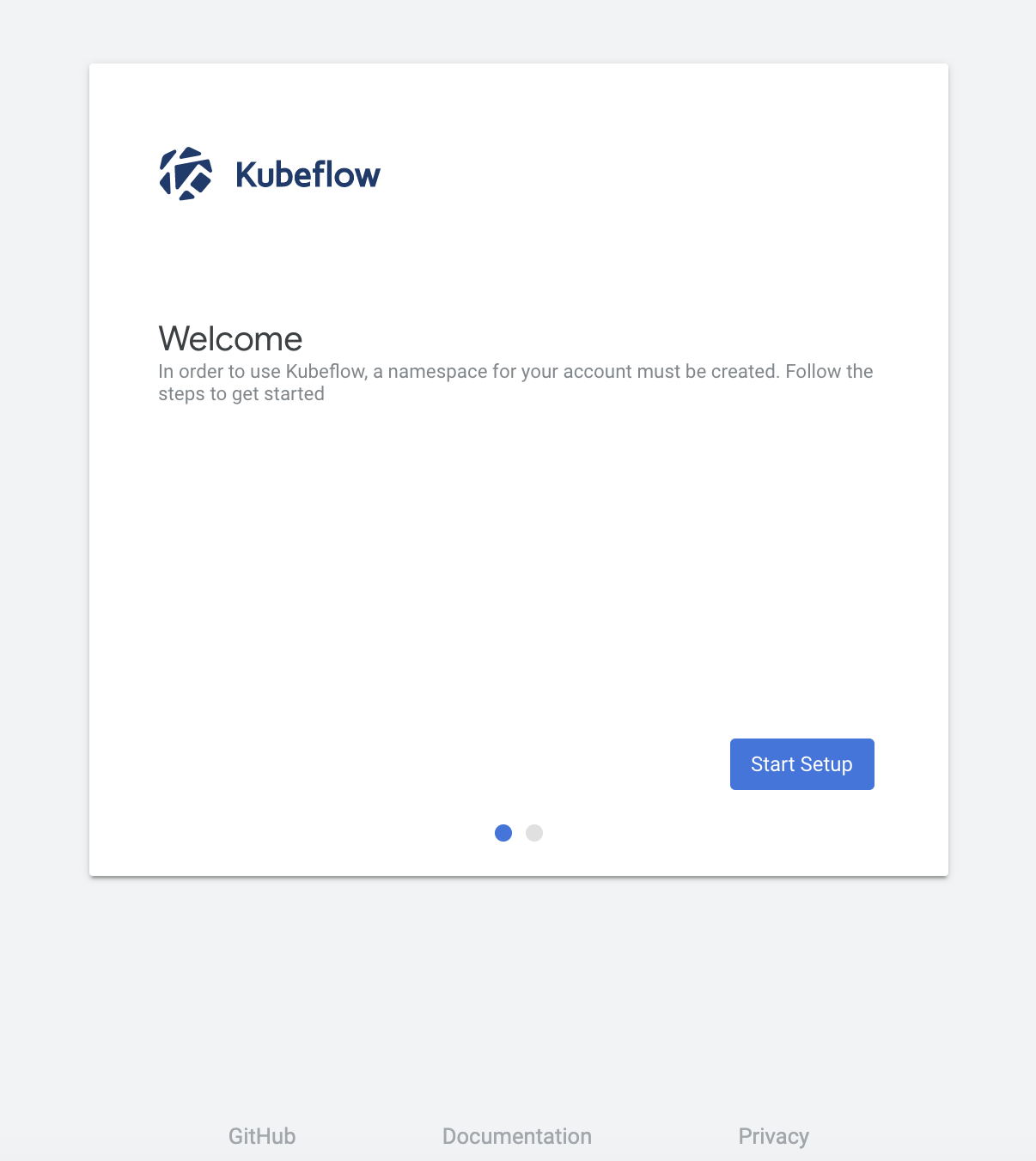
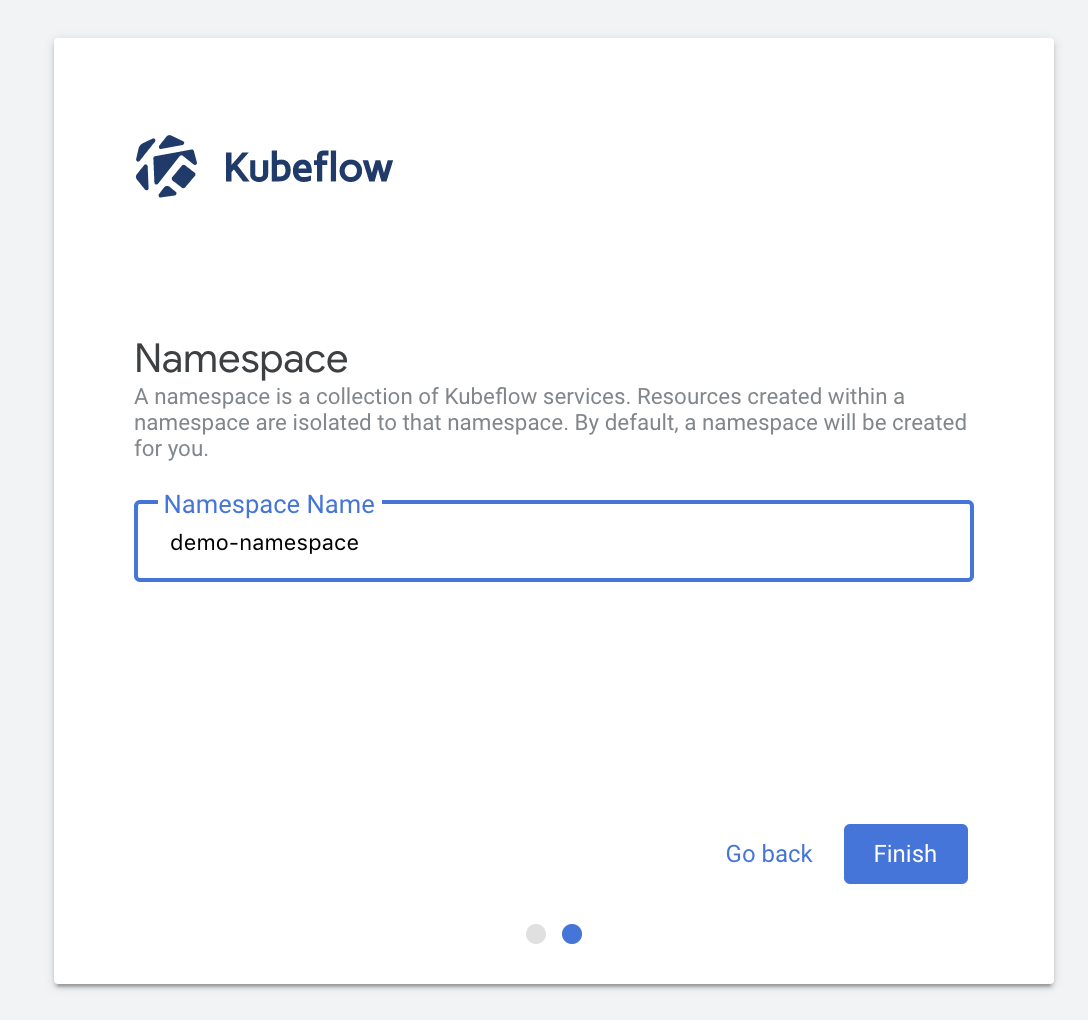
Configure pod security policy for your user profile¶
Before starting to use Kubeflow on vSphere, remember to configure the pod security policy for your user profile in order to create pods. This is important as pod creation is needed for many Kubeflow on vSphere functions, such as Notebook Server creation. Refer to Configure pod permission and security policy for more details and instructions.
Troubleshooting¶
Restrict specific LDAP accounts to login to Kubeflow on vSphere¶
Most of the time, you hope to specify some LDAP accounts can login to Kubeflow on vSphere, but not all LDAP accounts. Thus you need to add more filter restrictions when searching the directory.
As in the following example, you only allow user1 and user2 these 2 users to login to Kubeflow on vSphere.
kubectl edit configmap dex -n auth
...
userSearch:
baseDN: ou=people,dc=vmware,dc=com
filter: "(objectclass=inetOrgPerson)(|(uid=user1)(uid=user2))"
...
Pod creation failure¶
You may meet the following error in some operation:
FailedCreate 1s (x2 over 1s) statefulset-controller create Pod test-01-0 in StatefulSet test-01 failed error: pods “test-01-0” is forbidden: PodSecurityPolicy: unable to admit pod: []
This error occurs because you did not configure your pod security policy correctly. To solve this problem, you need to configure pod security policy based on Configure pod permission and security policy.